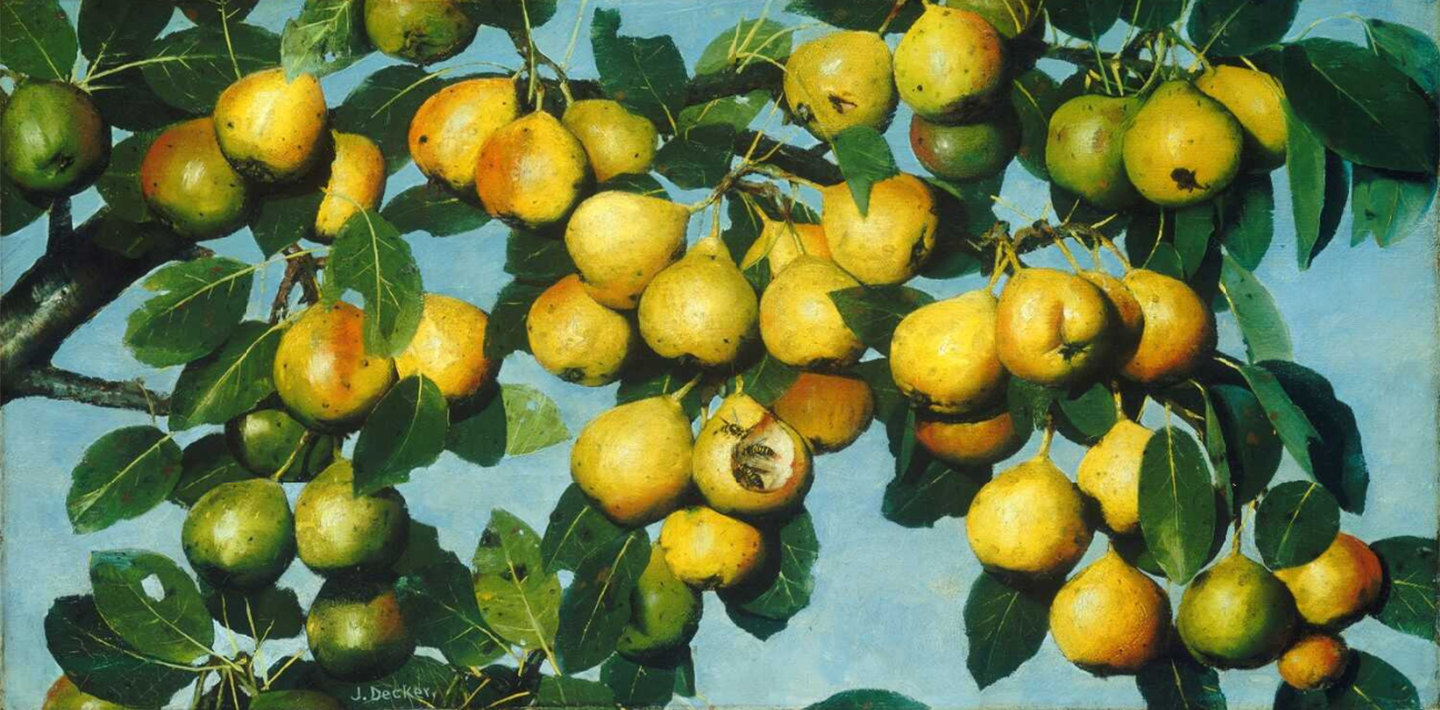Dog walks. So many dog walks. Over the recent months of quarantine, daily strolls in the woods near my home have provided welcome exercise, stress release, and changes of scenery. As refreshing breaks from the screen time and virtual meetings that punctuate my days as a curator working from home, these pandemic-era, nature-focused outings substitute, perhaps, for the restorative walks I used to take through our art-filled galleries. Luckily, walks are my enthusiastic dog’s lifeblood no matter the state of the world. So it was that on a cool, early May morning we found ourselves on a familiar trail when she sniffed out something decidedly unfamiliar at the path’s edge: a cornucopia of assorted fresh fruit and sugarcane nestled in the large, empty hollow of a beautiful old beech tree. Pineapple, star fruit, guava, watermelon, eggplant, mangos, grapes, bananas, plantains, apples, and cane stalks spilled out of the deep, triangular-shaped crevice.

Fruit and sugarcane, arranged in the hollow of an old tree
This arrangement, with its vivid color and beauty, could have been the subject of a still-life painting (a work of art that typically depicts a group of inanimate objects). It reminded me of the National Gallery of Art’s 17th-century Dutch paintings of decaying fruits and flowers, often known as vanitas (a Latin noun meaning empty) and signifying the transience of earthly existence—how fleeting life is, how impermanent. These still lifes can also suggest the cycles of life, as in Abraham Mignon’s

Abraham Mignon, Still Life with Fruit, Fish, and a Nest, c. 1675, oil on canvas, Gift of Mr. and Mrs. H. John Heinz III, 1989.23.1
Another picture, painted some 200 years later, is my favorite American “cousin” of these works: a small, brilliantly colored canvas by Joseph Decker called

Joseph Decker, Ripening Pears, c. 1884/1885, oil on canvas, Gift of Ann and Mark Kington/The Kington Foundation and the Avalon Fund, 2004.29.1
My thoughts have often returned to my unexpected encounter with that live arrangement out along the trail, nestled in the hollow of an old tree, and what it could have meant. I have no doubt that it was an offering of some sort, perhaps for a loved one, but it remains a mystery—and, as a friend put it recently, that not knowing is often associated with life and great works of art. It has certainly made me contemplate the meaning of “still life.” With little travel and few or no live performing arts or sports or cheering fans, quarantined life has been quite still for many (at least those without young children). It continues largely indoors, and even outdoors, road and air traffic is so reduced that we can hear birds calling clearly—the sorts of birds that might peck at a mound of fruit. The mound of fruit is gone, but I am still here. There is still life. There is still hope.
